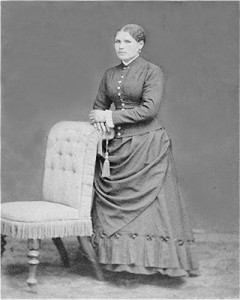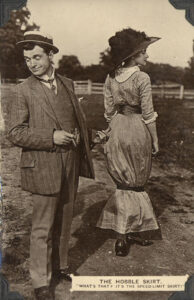war effort


 During World War II, as with other wars, things that were needed for the war effort had to be rationed. Things like metal, gasoline, even food made sense to me, but while I was listening to a book called “The Monuments Men” and shorter skirts were mentioned. My first thought was, “How did shorter skirts help the war effort? The men’s morale maybe, but seriously…how?” Well, it turns out that morale had nothing to do with it. The reasons lay elsewhere. Apparently, wool and silk were in high demand to make uniforms and parachutes. For manufacturers, that meant using materials like rayon and viscose (a semi-synthetic type of rayon fabric made from wood pulp that is used as a silk substitute. It has a similar drape and smooth feel to the luxury material) to make most civilians clothing.
During World War II, as with other wars, things that were needed for the war effort had to be rationed. Things like metal, gasoline, even food made sense to me, but while I was listening to a book called “The Monuments Men” and shorter skirts were mentioned. My first thought was, “How did shorter skirts help the war effort? The men’s morale maybe, but seriously…how?” Well, it turns out that morale had nothing to do with it. The reasons lay elsewhere. Apparently, wool and silk were in high demand to make uniforms and parachutes. For manufacturers, that meant using materials like rayon and viscose (a semi-synthetic type of rayon fabric made from wood pulp that is used as a silk substitute. It has a similar drape and smooth feel to the luxury material) to make most civilians clothing.
In addition to the types of material, the manufacturers had to find a way to actually conserve the amount of fabric being used, so to conserve fabric, dressmakers and manufacturers began designing shorter skirts and slimmer silhouettes. In the book, the comment was made that because so many people walked to work, the women had shapely legs, so I guess the men appreciated the new styles, much like when the miniskirt came into style in the 70s. Although, the women of the World War II era didn’t wear miniskirts. The dresses were just about knee length or slightly longer. The use of shoulder pads ended in World War II as well, although it has made periodic comebacks over the years. Another way that the manufacturers found to conserve fabric, was 

 the elimination of the cuff on men’s slacks. Oddly, that change was not as much appreciated by the men in World War II, although these days, cuffs on pants are a rarity, if you see them at all. Mostly these days, you might see pant legs rolled and that mostly on women, but not a real cuff.
the elimination of the cuff on men’s slacks. Oddly, that change was not as much appreciated by the men in World War II, although these days, cuffs on pants are a rarity, if you see them at all. Mostly these days, you might see pant legs rolled and that mostly on women, but not a real cuff.
Dress hemlines have been known to fluctuate with the times. The pre 1900s showed women with long full dresses that even dragged the ground, full slips and absolutely no ankles or feet showing. I suppose anyone showing an ankle or foot would be considered…loose. By the 1900s, the era of my Spencer great aunts, the skirts were still very long, but with a slimmer cut and fewer full slips to carry around. One of the oddest style came in 1910, when the Hobble Skirt came out. Of course, variations would be the pencil skirt. The roaring 20s, brought a carefree attitude and long cumbersome skirts were replaced with short, knee length (and maybe slightly shorter) skirts, suitable for rather wild dancing. With the stock market crash of 1929, the Crashing 30’s began, and skirts were again long and very conservative. There was no need for flashy dancewear, and there was not much dancing going on. Then, came World War II. Our men were fighting and we…the ones back at home had to make some sacrifices, So, came the shorter skirts made of rayon and such to save the normal materials for our “boys, fighting over there.” When the war ended, the ration weary women went back to their fuller, and slightly longer skirt, because…well they could. And then came the 60s…the era of free love and free expression. The miniskirt arrived, much to the horror of our parents. The Beatles were the rage, and the skirts grew (or shrank) to ever 

 shorter lengths. By the late 70s, the midi and maxiskirts had arrived. And so came the Hippie era. Everything was “free flowing and filled with flowers.” To me, it seems that since that time, skirts have been a mix of lengths, from the micromini to the maxi, but in reality, many women gave up skirts completely for jeans, short shorts (hot pants), capris, or whatever else suited our “fancies” because it was all available. I suppose a day could come again, when fashion would change because of war, politics, or personal preference. Styles often repeat. Time will tell that story.
shorter lengths. By the late 70s, the midi and maxiskirts had arrived. And so came the Hippie era. Everything was “free flowing and filled with flowers.” To me, it seems that since that time, skirts have been a mix of lengths, from the micromini to the maxi, but in reality, many women gave up skirts completely for jeans, short shorts (hot pants), capris, or whatever else suited our “fancies” because it was all available. I suppose a day could come again, when fashion would change because of war, politics, or personal preference. Styles often repeat. Time will tell that story.
 When nations go to war, it is not just the soldiers fighting, who pay the price. War is expensive, and everyone has to help with the war effort. The American people are famous for pitching in when “push comes to shove” and World War II would be no different. On May 15, 1942, the American war effort needed the American citizens to “tighten their belts” so that the funds could be used to help our soldiers. So, gasoline rationing began in 17 Eastern states. It was the first attempt to help the American war effort during World War II. President Franklin D Roosevelt then ensured that by the end of the year, mandatory gasoline rationing was in effect in all 48 states. Things got tougher, and the people felt the pinch, but they were willing to do what was necessary to win the war.
When nations go to war, it is not just the soldiers fighting, who pay the price. War is expensive, and everyone has to help with the war effort. The American people are famous for pitching in when “push comes to shove” and World War II would be no different. On May 15, 1942, the American war effort needed the American citizens to “tighten their belts” so that the funds could be used to help our soldiers. So, gasoline rationing began in 17 Eastern states. It was the first attempt to help the American war effort during World War II. President Franklin D Roosevelt then ensured that by the end of the year, mandatory gasoline rationing was in effect in all 48 states. Things got tougher, and the people felt the pinch, but they were willing to do what was necessary to win the war.
After World War I, many Americans were less than enthusiastic about entering another world war, at least until the Japanese attack on Pearl Harbor on December 7, 1941. The day after the attack, Congress almost unanimously approved Roosevelt’s request for a declaration of war against Japan and three days later Japan’s allies Germany and Italy declared war against the United States. Like it or not, war was on. With the onset of  war, Americans almost immediately felt the impact of the war. The economy quickly shifted from a focus on consumer goods into full-time war production. Everyone was pitching in, and everyone was willing. With so many men in now in the fighting, the women went to work in the factories to replace the now enlisted men, automobile factories began producing tanks and planes for Allied forces and households were required to limit their consumption of such products as rubber, gasoline, sugar, alcohol, and cigarettes. Anything that might be needed for the war effort, was sacrificed by the American people, who felt like it was them just doing their part…for the most part.
war, Americans almost immediately felt the impact of the war. The economy quickly shifted from a focus on consumer goods into full-time war production. Everyone was pitching in, and everyone was willing. With so many men in now in the fighting, the women went to work in the factories to replace the now enlisted men, automobile factories began producing tanks and planes for Allied forces and households were required to limit their consumption of such products as rubber, gasoline, sugar, alcohol, and cigarettes. Anything that might be needed for the war effort, was sacrificed by the American people, who felt like it was them just doing their part…for the most part.
A number of commodities were rationed. Rubber was the first to go, after the Japanese invasion of the Dutch East Indies cut off the US supply. The shortage of rubber, of course affected the availability of products such as tires and anything else that used rubber. Gasoline was a given, because it would be needed to move the troops. Also, it was thought that less gasoline, would bring less travel and therefore less wear and tear on rubber tires. At first, the government urged voluntary gasoline rationing, but by the spring of 1942 it was obvious that people wouldn’t assume that their use was extravagant and not a frivolous use. Hense, first 17 states put mandatory gasoline rationing into effect, and by December, controls were extended across the entire country.
The Government issued ration stamps for gasoline were issued by local boards and pasted to the windshield of  a family or individual’s automobile. The type of stamp determined the gasoline allotment for that automobile. Black stamps signified non-essential travel and so allowed no more than three gallons per week. Red stamps were for workers who needed more gas, including policemen and mail carriers. With the restrictions, gasoline became a hot commodity on the black market, while legal measures of conserving gas, like carpooling, became the norm. Another Government mandated method to reduce gas consumption, the government passed a mandatory wartime speed limit of 35 mph, known as the “Victory Speed.” Things got tight in many areas, but the American people ultimately persevered, and the war effort supplied the needed commodities.
a family or individual’s automobile. The type of stamp determined the gasoline allotment for that automobile. Black stamps signified non-essential travel and so allowed no more than three gallons per week. Red stamps were for workers who needed more gas, including policemen and mail carriers. With the restrictions, gasoline became a hot commodity on the black market, while legal measures of conserving gas, like carpooling, became the norm. Another Government mandated method to reduce gas consumption, the government passed a mandatory wartime speed limit of 35 mph, known as the “Victory Speed.” Things got tight in many areas, but the American people ultimately persevered, and the war effort supplied the needed commodities.

